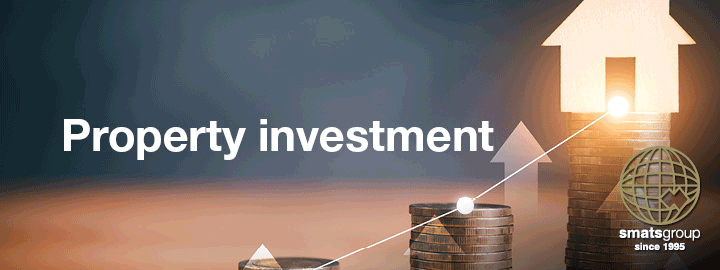Affordability crisis at 40 year ebb but borrowers still piling into market
You have to reach back in the archives before a time when Boris Becker won the Australian Open, Paul Keating lost the prime ministership, and the Macarena was the top selling single of the year, to find a time when property prices were further out of reach than they are today.
Not since Australia’s peak property body began monitoring the market in 1996 has housing affordability in Australia been in a more dire state.
The nation is confronting a rental, housing and cost of living crisis that threatens to engulf some and seriously stress many others.
Analysis from the Real Estate Institute (REIA) of Australia’s latest Housing Affordability Report shows the average loan repayment now amounts to a wallet-draining 48.1 per cent of the median family income, 1.3 percentage points more than last quarter.
REIA President, Leanne Pilkington, the report highlights the impact interest rate increases and rising inflation have had on Australians in regard to both rent demands and home ownership.
“Declines ranged from 1.0 percentage points in Tasmania, to 1.8 percentage points in South Australia. Rental affordability also declined over the quarter.”
Ms Pilkington said that nationally, the proportion of income required to meet median rents increased 0.2 percentage points over the quarter to 24.6 per cent.
Those entering the real estate market are also taking out bigger loans. The average loan size to first home buyers increased to $532,429. This was an increase of 2.7 per cent over the quarter and 6.8 per cent over the past 12 months.
Nationally, the average size of new owner-occupier loans and new investor loans reached the same all-time high of $641,000 in July.
Despite the affordability issues and high rates of mortgage stress, buyers do continue to enter the market and drive property prices upwards.
Owner-occupier loans inched up in June, according to Australian Bureau of Statistics data released Friday (6 September) but it’s investors who are particularly active.
The value of new investor loans rose 5.4 per cent to $11.7 billion, which was 35.4 per cent higher than July 2023. The value of owner-occupier loans rose 2.9 per cent to $18.9 billion, 21.4 per cent higher than July 2023.
There is this misconception that investors compete with first home buyers.
- Maurice Tapang, Housing Industry Association
Mish Tan, ABS Head of Finance Statistics, said, “Investors have continued to see the largest growth in new loans over the past year, increasing more than a third in value since July 2023, from $8.6 billion to $11.7 billion.
“This is close to the record high of $11.8 billion reached in January 2022.
“The increased investor activity we’re seeing in the lending statistics is mostly because more loans are being approved and is only partly driven by higher dwelling prices”, Dr Tan said.
Loans issued to first home buyers made up 35.4 per cent of the overall home buying market in July, which is above the historical average of 30 per cent.
Housing Industry Association (HIA) economist HIA Economist, Maurice Tapang, said first home buyers have been resilient in this cycle, with the number of loans issued to this group increasing by a further 0.8 per cent in the month of July to 9,990.
This leaves the number of loans issued in the three months to July 2024 to first home buyers 6.4 per cent higher compared to the same time in the previous year.
“The number of housing loans issued to first-time home buyers has been steadily increasing in recent months, pointing to strong demand for homes among aspiring homeowners,” Mr Tapang said.
“It has been ten months since the last rate increase, and home buying confidence is picking up across different borrower types.”
“There is this misconception that investors compete with first home buyers.
“This data shows that the two can both be very active in the market.
“Investors in the market have been important in adding to housing supply, particularly in this cycle, amid higher rents and low vacancy rates.”
There were also 24,630 loans issued for the purchase or construction of a new home in the three months to July 2024. This is 16.8 per cent higher compared to the same time in the previous year.
“As is expected, investors are the first segment of the market to return as they see through the macro-dynamics of house price growth and rising rents.
“It is expected that owner-occupiers will follow suit, which will see more of them flow into the new home market amid a return of confidence and certainty with build costs and timeframes,” concluded Mr Tapang.
The number of loans issued to first home buyers in the three months to July 2024 rose by 13.9 per cent in Victoria compared to the previous year, followed by the Northern Territory (+10.6 per cent), Queensland (+6.8 per cent), New South Wales (+4.1 per cent) and Tasmania (+1.7 per cent).
In other jurisdictions, this number fell led by the Australian Capital Territory (-5.2 per cent), followed by more modest declines in Western Australia (-1.3 per cent) and South Australia (-0.9 per cent).
Over the same period, the number of loans issued for new home purchase or construction in the three months to July 2024 increased by 54.5 per cent in Western Australia, followed by Queensland (+17.5 per cent), South Australia (+11.0 per cent), New South Wales (+9.9 per cent), Victoria (+8.0 per cent), Tasmania (+5.0 per cent) and the Australian Capital Territory (+2.8 per cent).
The Northern Territory was the only jurisdiction to record a decline, down by 4.4 per cent compared to the previous year.



















